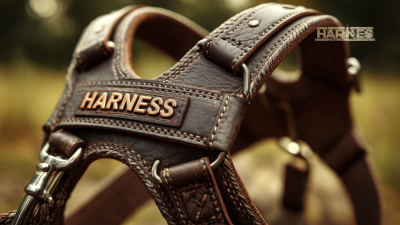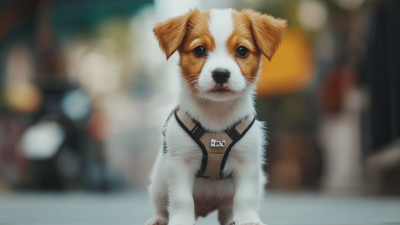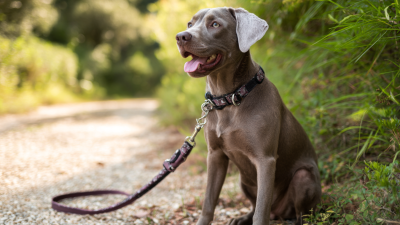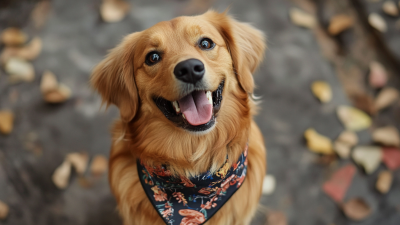$0.00
When it comes to walking our furry friends, choosing the right equipment is essential for both their comfort and our control. A study from the American Veterinary Medical Association (AVMA) highlights that approximately 20% of pet owners report their dogs pulling on the leash during walks, which can lead to injury or behavioral issues. This is where a well-designed Dog Harness comes into play, providing a more secure fit that minimizes strain on the dog's neck and fosters better control for the owner. With numerous options available in the market, veterinary experts emphasize the importance of selecting a harness that accommodates the dog's unique needs and physical characteristics. In this blog, we will delve into the seven best dog harnesses that prioritize comfort and control, backed by expert insights and recommendations. Whether you have a small breed or a large, energetic companion, finding the right Dog Harness can transform your daily walks into a more enjoyable experience for both you and your beloved pet.

Choosing the right dog harness is crucial for both the comfort of your pet and the control you have during walks. According to a survey conducted by the American Society for the Prevention of Cruelty to Animals (ASPCA), a well-fitting harness can reduce strain on a dog's neck by up to 75% compared to traditional collars. This is particularly important for breeds prone to respiratory issues, such as Bulldogs or Pugs, highlighting the necessity of proper equipment for their health and wellbeing.
Veterinary experts recommend that pet owners consider harness designs that distribute pressure evenly across a dog's body. Data from the Journal of Veterinary Behavior reveals that dogs wearing poorly fitted harnesses may exhibit signs of discomfort, such as pulling or trying to escape, which can lead to behavioral issues. Additionally, a recent study indicated that harnesses specifically designed for managing large or strong breeds can significantly improve walking dynamics and owner control, making it essential to select one that matches your dog's size and temperament.
| Harness Type | Size Range | Material | Adjustability | Price Range (USD) |
|---|---|---|---|---|
| Traditional Harness | Small to Large | Nylon | Highly Adjustable | 30 - 50 |
| Step-In Harness | X-Small to Medium | Mesh Fabric | Moderately Adjustable | 25 - 45 |
| Front-Clip Harness | Small to Extra Large | Polyester | Fully Adjustable | 35 - 65 |
| Padded Harness | Medium to Large | Neoprene | Easily Adjustable | 45 - 75 |
| Vest Harness | Small to Large | Fabric Blend | Customizable Fit | 40 - 80 |
| No-Pull Harness | Medium to Extra Large | Reflective Material | High Adjustability | 50 - 90 |
| Cooling Harness | Small to Large | Cooling Fabric | Adjustable Straps | 35 - 70 |
When selecting a comfortable dog harness, there are several key features to consider that can enhance both comfort and control during walks. First, look for adjustable straps. A harness that can be tailored to fit your dog’s unique body shape ensures a snug yet comfortable fit, preventing chafing and allowing for freedom of movement. Many harnesses also incorporate padding, particularly around the chest and belly areas, which can significantly increase comfort levels and reduce the risk of injury, especially during sudden pulls or tugs.

Another essential feature is the presence of a front clip. Harnesses with a front attachment point help discourage pulling by redirecting your dog toward you, making walks more enjoyable and manageable. Additionally, consider the material of the harness. Breathable fabrics are preferable, especially in warmer weather, as they help regulate your dog's body temperature. Reflective elements are also a great feature for evening walks, enhancing visibility and safety. By focusing on these vital aspects, you can ensure a harness that not only fits well but also promotes a positive walking experience for both you and your furry friend.
When it comes to selecting the best dog harnesses, balancing comfort and control is crucial for both pets and their owners. According to a report by the American Veterinary Medical Association, approximately 67% of U.S. households own a pet, with a significant number of dog owners prioritizing safety and comfort in their daily walks. A well-designed harness not only provides comfort to the dog but also helps prevent injuries caused by pulling, which is why veterinary experts recommend specific harness styles that distribute pressure evenly across the dog's body.
In evaluating harnesses, it’s important to consider materials and adjustability. Studies indicate that harnesses made from breathable, padded fabric can reduce chafing and discomfort during prolonged use. Additionally, a survey conducted by the Association of Professional Dog Trainers revealed that 75% of dog trainers prefer harnesses with front-clip options, as they allow for better steering and minimize pulling behavior. This combination of comfort and control not only enhances the dog’s walking experience but also strengthens the bond between pet and owner through positive reinforcement during training.
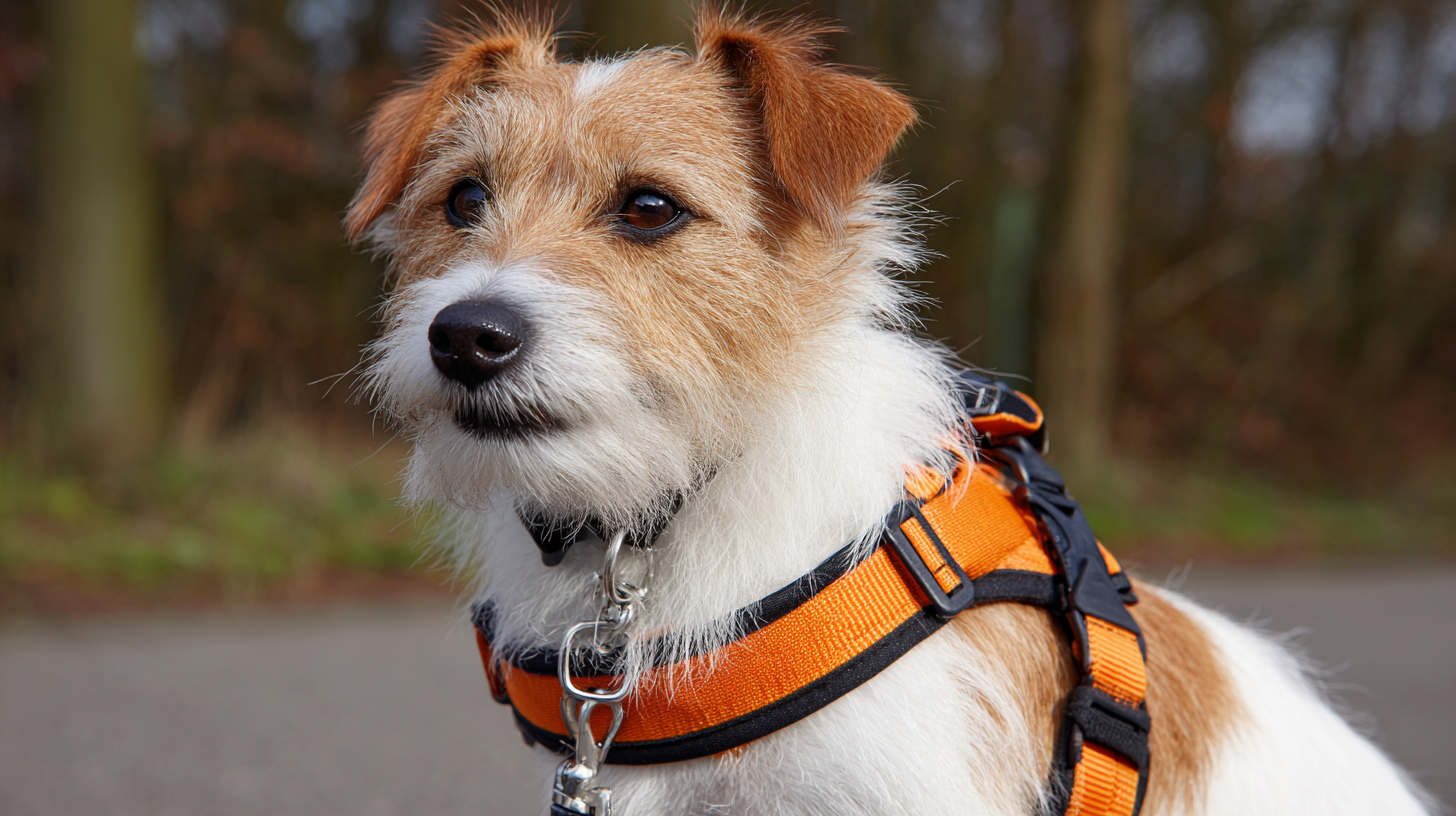
When it comes to ensuring your dog is comfortable and well-controlled during walks, properly fitting a harness is crucial. Veterinary experts recommend that a harness should fit snugly without restricting movement. According to a study published in the Journal of Veterinary Behavior, improper fitting can lead to discomfort, stress, and even behavioral issues in dogs. It's essential that the harness is adjusted so that you can fit two fingers between the harness and your dog's skin, allowing for enough room to avoid chafing.
Moreover, many experts suggest measuring your dog’s chest and neck before purchasing a harness. The American Kennel Club reports that 20% of dog owners do not measure their pets before buying gear. Skipping this step can result in a harness that is either too loose or too tight, compromising your dog's safety and comfort. A welling-fitted harness not only promotes good posture but also distributes the pressure evenly across the dog's body, reducing the risk of injury. Paying attention to these details can make a significant difference in enhancing the overall walking experience for both you and your furry friend.
When investing in a dog harness, understanding how to maintain and care for it is essential for ensuring longevity and continued comfort for your pet. According to the American Kennel Club, properly maintained harnesses can last anywhere from 5 to 10 years, depending on the materials and usage frequency. Regular inspections for wear and tear, as well as routine cleaning, can significantly extend the lifespan of your harness. Ensure to look for frayed edges, damaged clips, or deteriorating fabric that might compromise both safety and functionality.
Cleaning your dog harness correctly is another critical aspect of care. The Pet Product Manufacturers Association suggests that harnesses made from polyester or nylon should be hand-washed in warm, soapy water, followed by thorough rinsing and air drying away from direct sunlight to prevent fading and fabric degradation. For harnesses containing padding or reflective materials, check the manufacturer’s instructions for specific care guidelines. Proper maintenance not only enhances the harness's durability but also contributes to your dog’s comfort, thus promoting a safer and enjoyable walking experience.
This chart displays the average comfort and control ratings for different dog harness types according to veterinary experts. The ratings are based on a scale of 1 to 10, where 10 indicates the highest level of comfort and control.

